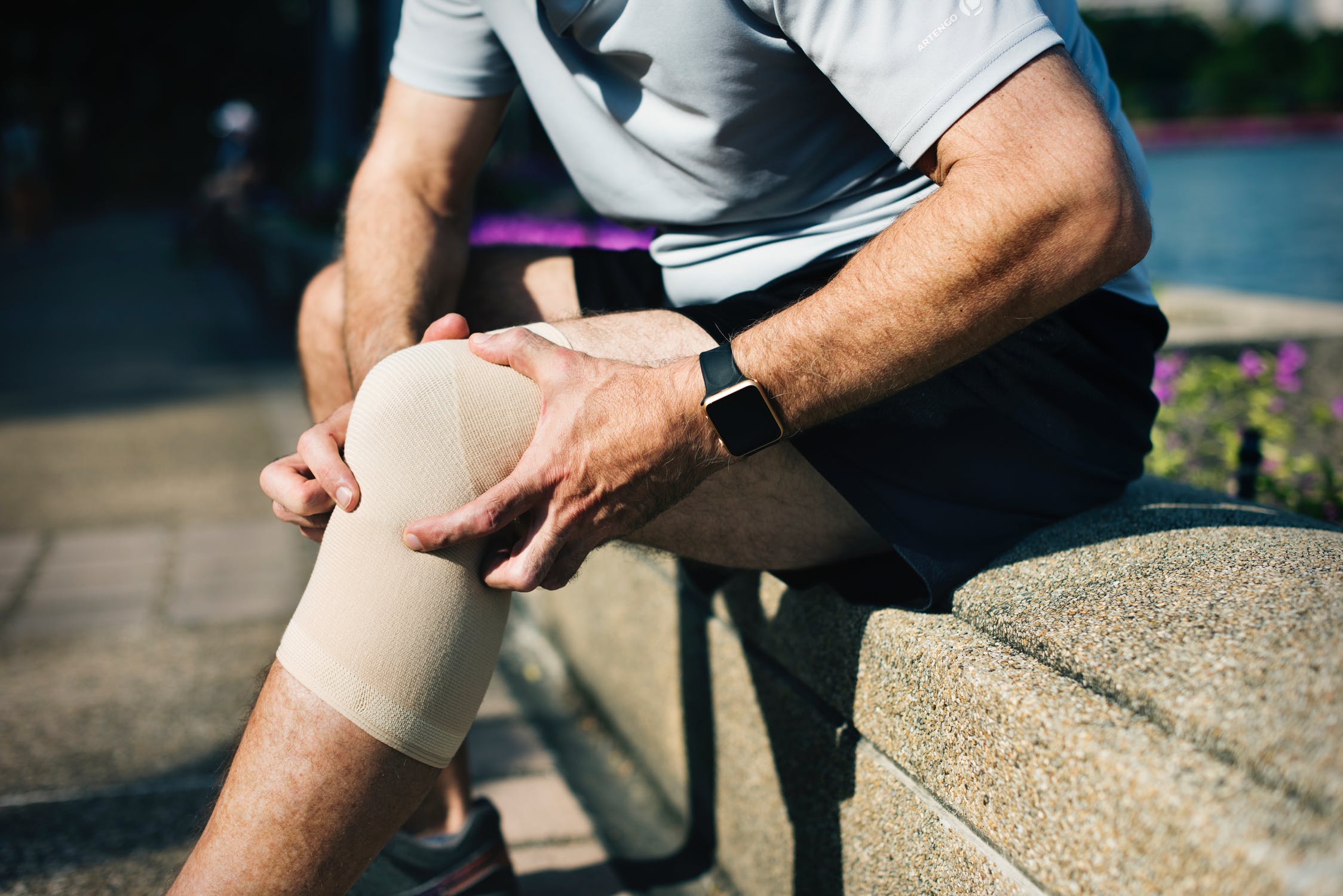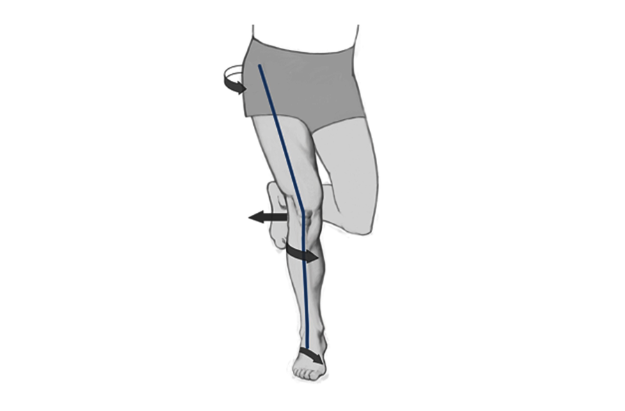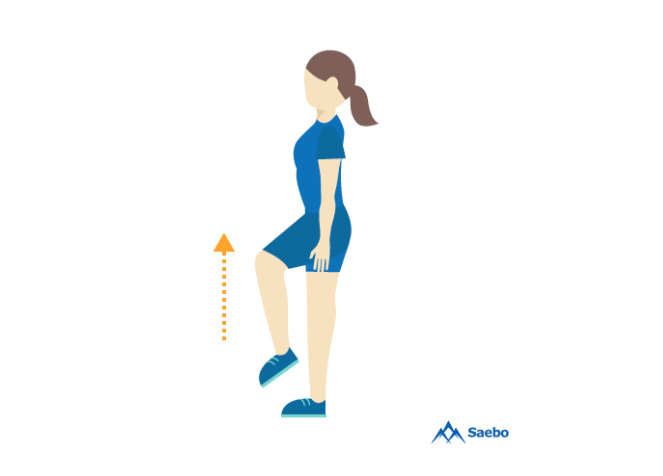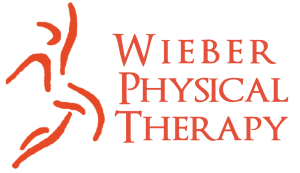
By Megan Westling, DPT, OCS, RYT
Many injuries are at least partially caused by poor biomechanics. Biomechanics, by definition, refers to the ability/function of muscles and their attachments. Because the knee is a hinge joint and permits motion in only one plane, it relies on muscles (as well as tendons and ligaments) for support. One of the most frequent causes of knee pain is patello-femoral pain, which is the accepted term for localized pain to the front portion of the knee. Many people with this type of knee pain have perfectly normal x-rays and MRI’s, meaning there are no structural issues going on. The problem is what is happening to their knee during functional movements like bending, climbing stairs, and jumping.

The knee is particularly prone to abnormal stresses/forces that occur in weight bearing. Since it is between the hip and ankle joints, it is greatly dependent on these joints for optimal functioning. When we have weakness to our hip or torso we change the angle that occurs at the knee. If we have flat feet without arch support, or stiffness to our ankle joint, we again change the angle that occurs at the knee. When the knee drops toward the midline of the body, we refer to it as a “valgus angle”. For many patients with knee pain, this valgus angle only occurs under load. This means that we have no increase in valgus angle in sitting or lying down but as soon as we put demand on the knee to climb stairs or bend towards the floor, the angle increases and we increase the force on our knee. We put too much demand on the inner half of our knee joint, creating wear and tear of the joint as well as mal-tracking of the kneecap.
So the real question is, how do we keep our knees strong and at a healthy angle to avoid injury? We must keep our hips (and especially the buttocks!) strong and work on creating strong foot muscles to improve our arch support. Try these three simple exercises to start out:
- Mini squat. Hold on gently to counter/chair for balance. Feel the weight shift into your heels and use your buttocks to slowly bend the knees. Keep your knees apart and in line with your shoulders and feet. Repeat on both sides 10-15 times.

- Single leg stance. Engage your core and shift your weight onto one leg. Work to keep your hips level as you stand on one leg. The goal is to hold for 30 seconds. Make sure to work both sides.

- Side-lying leg lift. Engage your core, and slightly roll your hips forward. Straighten and lift the top leg leading with your heel, making sure to feel the fatigue in your buttocks muscles. Repeat 10-15 times, slowly and on both sides.

If you are experiencing any feeling of pain or weakness to your knees, physical therapy is a great place to start. Feel free to give us a call, and we’d be happy to help!
Above image(s) owned by Trainer Academy
References:
Crossley et al. Patellofemoral pain consensus statement from the 4th International Patellofemoral Pain Research Retreat, Manchester. Part 2: recommended physical interventions (exercise, taping, bracing, foot orthoses and combined interventions). British Journal of Sports Medicine. 2016.
Jeffrey Placzek, MD, PT. Davide Boyce, PT, OCS. Orthopedic Physical Therapy Secrets. St. Louis: Elsevier Mosby, 2006.

Leave a Reply
You must be logged in to post a comment.